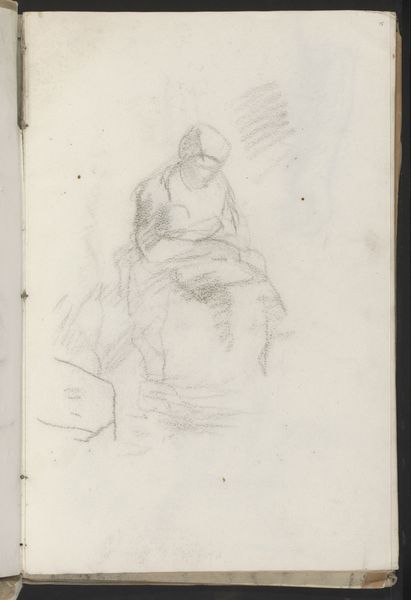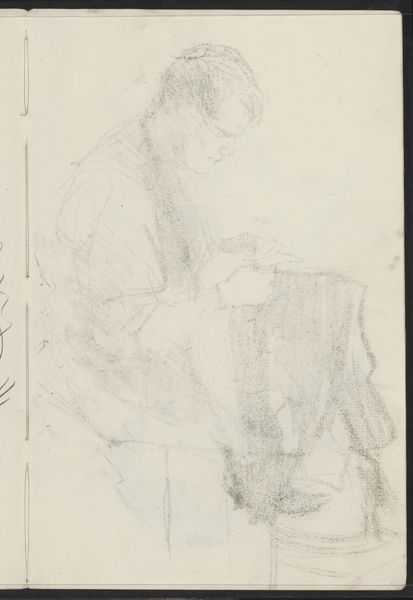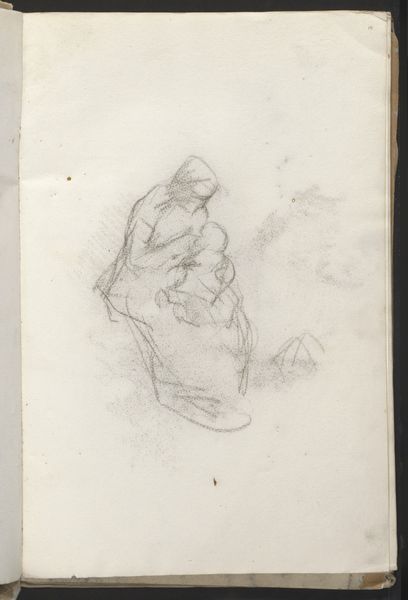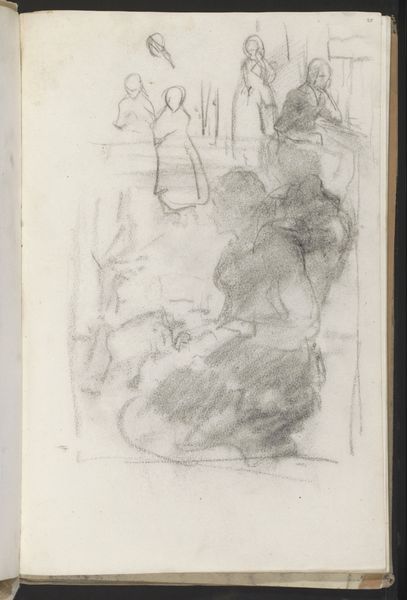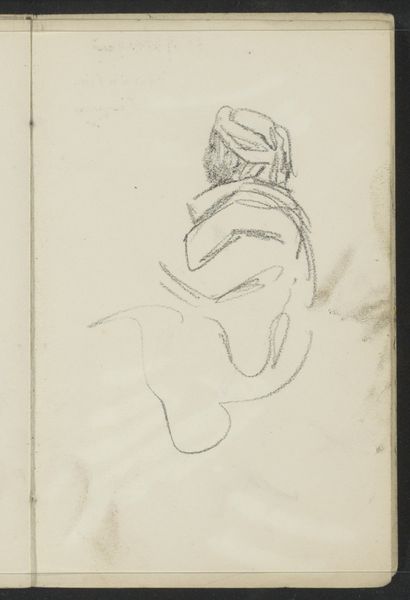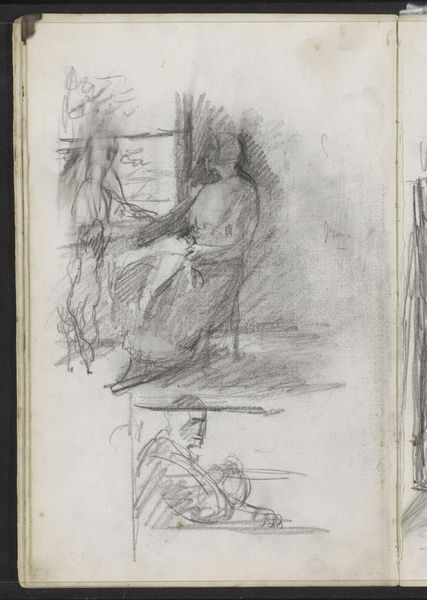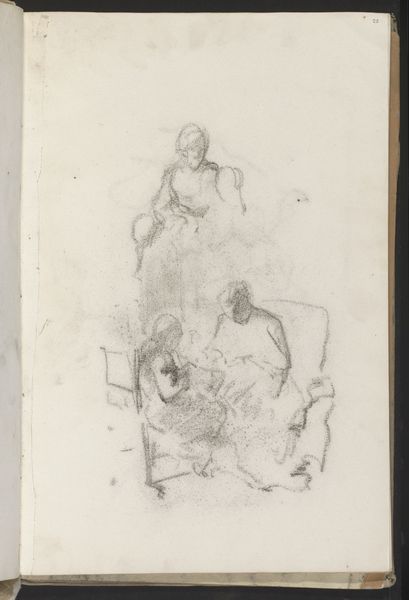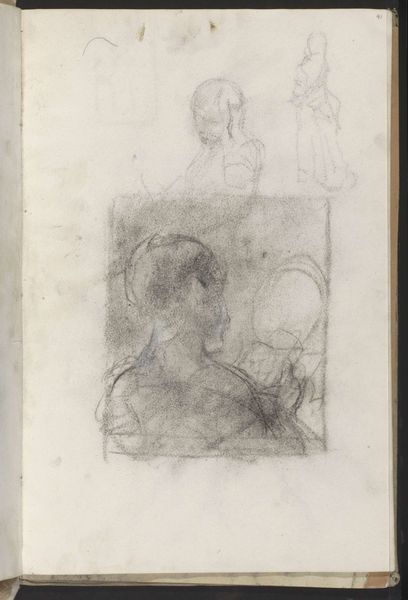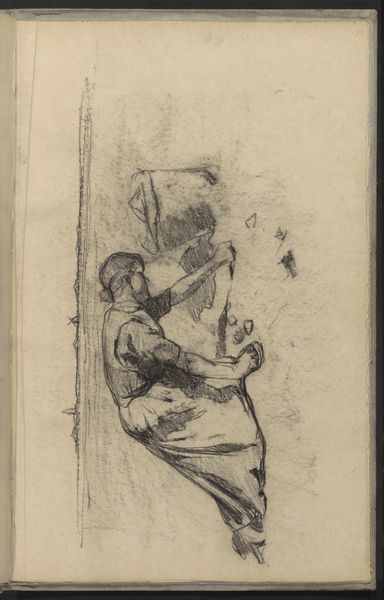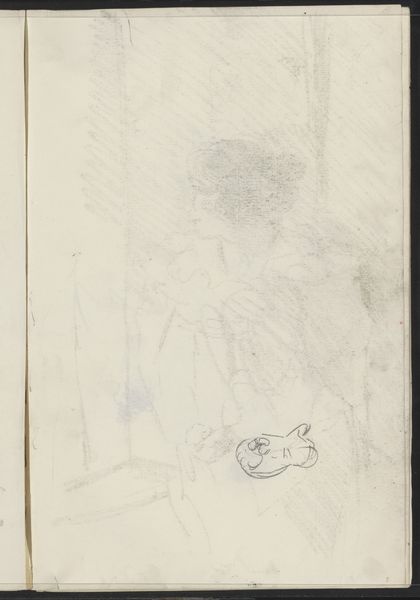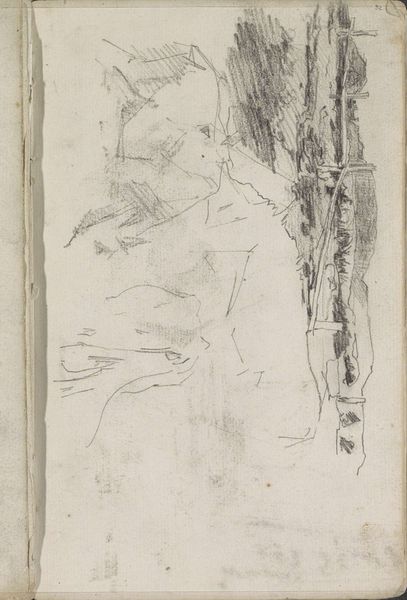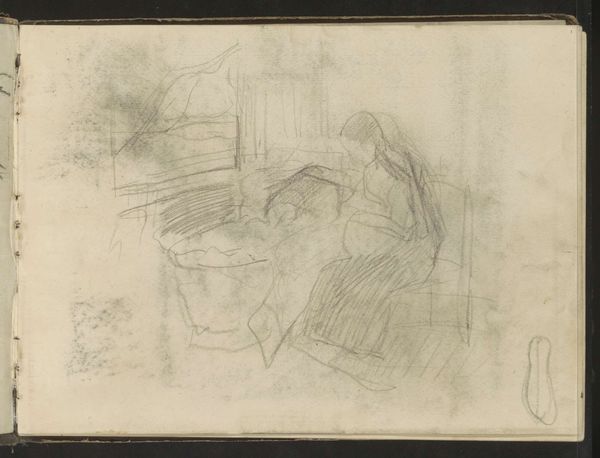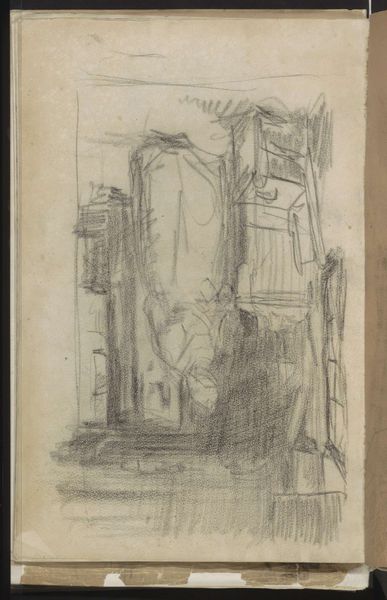
drawing, paper, pencil
#
portrait
#
drawing
#
amateur sketch
#
toned paper
#
light pencil work
#
impressionism
#
pencil sketch
#
incomplete sketchy
#
paper
#
personal sketchbook
#
ink drawing experimentation
#
pen-ink sketch
#
pencil
#
sketchbook drawing
#
genre-painting
#
sketchbook art
#
realism
Copyright: Rijks Museum: Open Domain
Curator: This unassuming pencil drawing offers a glimpse into the domestic sphere, dating sometime between 1854 and 1914. The piece, titled "Jonge vrouw zittend in een interieur" by Albert Neuhuys, captures a young woman seated in what seems to be the interior of a home, currently held in the Rijksmuseum collection. Editor: My first impression is one of quiet introspection. There's a gentle melancholia to the sketch. The hazy pencil strokes suggest a memory or a fleeting moment captured rather than a precise portrait. Curator: That impression resonates. Viewing this sketch, I think it invites us to consider the constrained roles often imposed upon women during this period. Confined to domestic spaces, their lives and identities were frequently reduced to their roles as wives, mothers, and homemakers. Editor: Indeed, but even within that context, the chair itself as a motif suggests social standing, or even imprisonment. We often perceive a seat as a source of rest, but here the chair is almost a continuation of her garment, as if they were a single item. Notice, also, the linear strokes surrounding her almost obscure the domestic space she is meant to inhabit. Curator: That resonates with recent dialogues around space, especially within a feminist theoretical framework, and highlights how spaces, both physical and symbolic, can become sites of both oppression and resistance. There seems to be the visual construction of domesticity but also a kind of erasure of specificity. The young woman's face is turned away and obscured by hatching and line. Editor: Perhaps she also carries echoes of traditional madonna iconography? We observe a somber, gentle face framed by clothing and the surrounding enclosure. Light and dark hatching almost serve to halo the woman, an interesting consideration considering the secularity of domestic labor in the late nineteenth century. Curator: I appreciate the point about a pseudo-religious framing. While it's speculative, it does suggest the possibility of reading this seemingly simple sketch as something far more layered and complex in terms of its symbolic representation of female identity. Neuhuys appears to capture something fundamental about the lives and roles of women that endures. Editor: I agree completely. And by stripping away any of the specificity with this 'incomplete sketchy' drawing, the piece presents an icon that extends into and throughout history, a memory, perhaps, to the female domestic role throughout civilization. Thank you for that insight. Curator: It's been a pleasure to consider how this deceptively simple sketch speaks to enduring complexities surrounding the female identity within a sociohistorical setting.
Comments
No comments
Be the first to comment and join the conversation on the ultimate creative platform.
